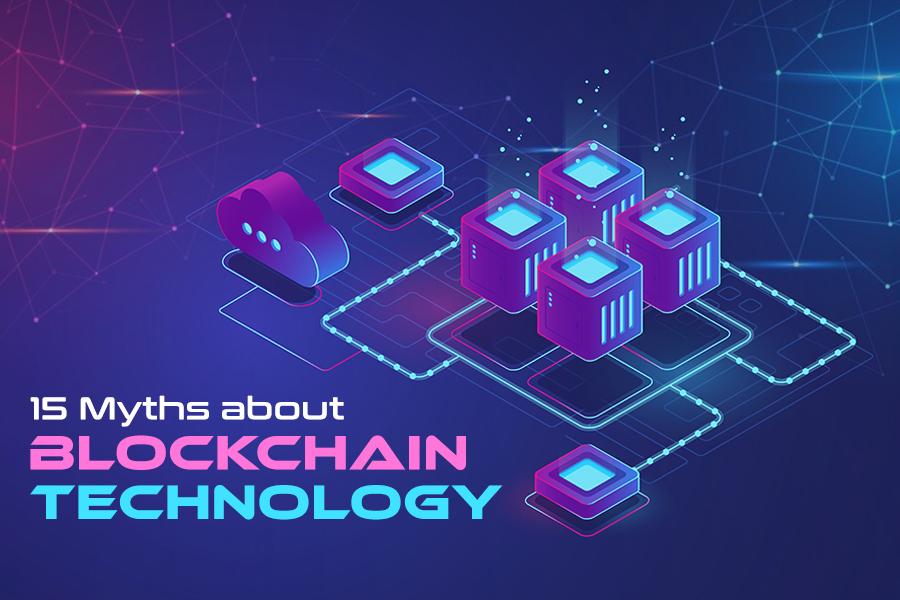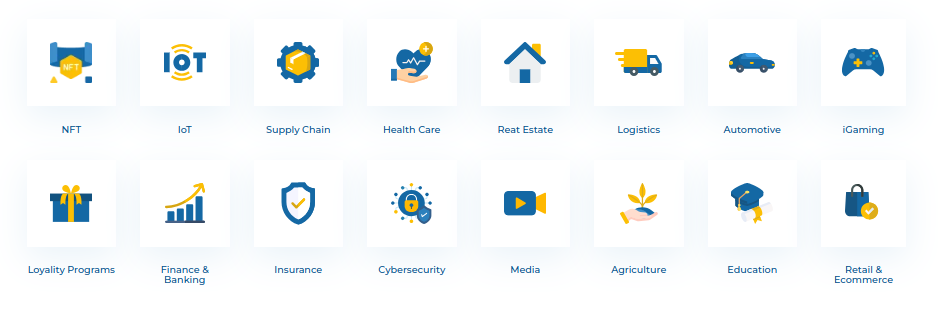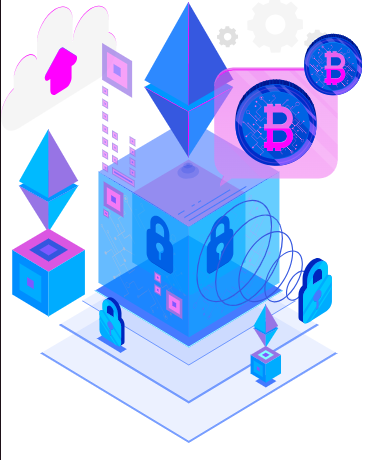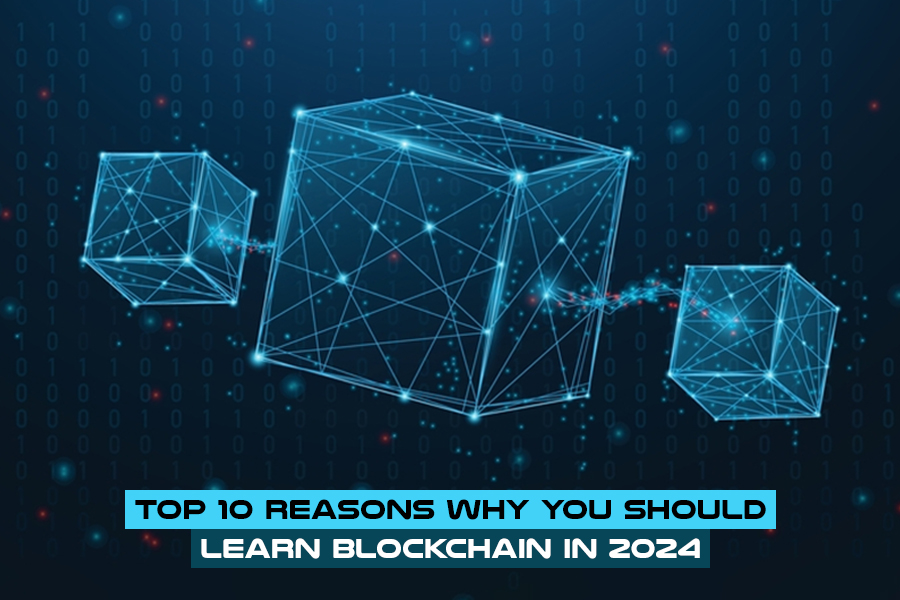
Blockchain has emerged as the subject of intense curiosity in the tech industry. The innovative technology has garnered immense popularity recently for its highly secure and transparent way of recording transactions.
Businesses across various sectors have been integrating blockchain technology into their systems, from finance to real estate, due to its resistance to hacking. Since the technology uses a decentralised system to store data, it is tough for outsiders to alter it.
However, blockchain technology is still young and constantly upgrading. Hence, despite its popularity, there are several myths associated with it.
Understanding these blockchain myths is essential to avoiding disruptive surprises and staying updated about the factual benefits of this effective technology before joining Blockchain Course in Kolkata.
So, jump into the following section, as today’s blog will examine all the popular blockchain-related myths and debunk them with factual information.
Understanding Blockchain Myths
Touted as a game-changer in various industries, blockchain technology is a secure, decentralised way of storing and transferring information. Its ability to create transparent and immutable records has made it the focus of attention for businesses, governments, and individuals.
However, as with any emerging technology, some things need to be clarified, and myths surrounding blockchain create confusion and hinder its adoption.
Hence, it’s essential to separate fact from fiction and debunk the myths to understand their limitations and potential.
Let’s start the process by better understanding blockchain technology myths and why knowing about them is essential!
What are Blockchain Myths?
Myths refer to widely held misconceptions about a specific matter. In the context of blockchain, most misconceptions relate to how it works, its limitations, and its capabilities. Typically, these myths result from a lack of understanding of blockchain technology, misinformation, and confusion with other concepts, like Bitcoin.
Why Address Blockchain Myths?
If you wish to understand blockchain technology and facilitate its integration into your business, you must separate the facts from the misinformation.
Otherwise, your team will be hesitant to trust the system or perform mismanagement. Furthermore, accurate information can help growth and innovation. Not grasping blockchain technology operations will discourage investors from investing in your projects.
Furthermore, myths about blockchain will limit your exploration of the technology’s features and real-life applications. Things can take a turn for the worse if your policymakers create unnecessary restrictions and regulations regarding the implementation of blockchain technology and prevent you from making informed decisions.
Hence, breaking the misconceptions before incorporating blockchain technology into your organisation is essential.
Debunking Common Blockchain Myths
The blockchain landscape has experienced drastic fluctuations over the years. The sudden rise and crash of Bitcoin presented the ideal environment for people to form different perceptions about the functionalities of blockchain technology. The many benefits of blockchain have sometimes also led to misconceptions about the technology.
Luckily, we are here to break it down for you.
So, read on for all the blockchain myths and facts!
Myth #1: Blockchain And Bitcoin Is Interchangeable
In 2020, blockchain came into the limelight, riding on the popularity wave of the cryptocurrency, Bitcoin. Since then, many have considered blockchain the same concept as Bitcoin. Some have confused it with other cryptocurrencies as well.
The Fact: Contrary to what many believe, blockchain and cryptocurrency are two different things. Blockchain is the technology that helped build the foundation for cryptocurrencies like Bitcoin. In terms of its applications and benefits, it is much more diverse than cryptocurrency.
For instance, in the financial industry alone, professionals use blockchain technology for money transfers, smart contract automation, financial security, and data storage. You can also observe various uses of blockchain technology across other sectors, including real estate, healthcare, supply chain, digital transformation, e-commerce, government, insurance, telecommunications, and more.

Myth #2: Blockchain Is A Cloud-Based Database
One of the most popular uses of blockchain technology is storing and distributing data among specific parties. This valuable feature has resulted in one of the most popular misconceptions about blockchain, which is that blockchain is a cloud-based database.
The Fact: Cloud-based solutions and blockchain technology are two completely different things. While a cloud-based system requires the internet to provide its services, blockchain technology uses various encryption methods and hash to store and deliver ledger blocks.
Cloud platform data is mutable for individuals with the correct passwords and editing permissions. However, blockchain information is nearly impossible to edit or delete. The technology creates a documentation trail and makes it easy to outline the transaction’s history for its members.
Myth #3: Blockchain Is The Ultimate Solution For Everything
One of the common blockchain myths is that blockchain is the ultimate solution to every digital problem related to centralised systems, including information loss and data alteration without permission.
The Fact: Blockchain offers some impeccable advantages. It’s a technology with limitless potential. However, it’s not a solution to every digital issue.
While blockchain can make your business immutable, transparent and efficient, it’s not a one-for-all solution. It cannot wholly replace centralised systems since it has its limitations. For instance, blockchain technology can be complex to comprehend. You might face immutability challenges and scaling issues. Plus, developing blockchain technology is not the cheapest investment.
Myth #4: Data In Blockchain Is Always Public
Since blockchain technologies maintain complete transparency, the data is accessible for public viewing.
The Fact: When debunking blockchain myths, you will notice that many of these myths have arisen from the complexities and benefits of the technology itself. One of those myths is regarding public access to information in the blockchain.
The truth is that blockchain can be private, hybrid, or public. What type of blockchain you should use depends solely on your purpose. For instance, democratised and authority-free organisations can use public chains, while private blockchains are more suitable for businesses in healthcare and finances.
Irrespective of your type of blockchain, it will not be accessible to everyone. Members can only join the network and view information through invitation. To participate in the network, they must also meet a strict identity verification process.
Myth #5: Blockchain Is Impossible To Hack
Thanks to its decentralised structure and encrypted mechanism, tampering with blockchain information is impossible.
The Fact: Blockchain uses a hashing algorithm to operate. Whenever a new transaction occurs in the network, it logs it in with a random and unique 32-bit nonce. Then, it tightens the information with a 256-bit encrypted hash. As those numbers are almost unguessable, it prevents the information from tempering.
However, due to the limitations of blockchain technology, hackers can find ways to sneak into the network and attach the verification process, making it one of the false beliefs about blockchain. They can exploit code errors and take advantage of security flaws. The best way to ensure your blockchain information doesn’t get hacked is through strategic integration of the system.
Myth #6: Blockchain Technology Is Still Not Ready For Business Adoption
Many business owners believe blockchain has critical security, performance and privacy flaws. Hence, the technology must still be prepared for incorporation into the business.
The Fact: Blockchain is still new in the industry. While it has certain flaws, the technology has proved extremely valuable for protecting data and making it more accessible to different parties. According to Forbes, a survey revealed that more than 87% of UK, US and Chinese organisations intend to invest in blockchain systems.
Myth #7: Smart Contracts Are Legally Binding
Since smart contracts are, at their core, just like any generic agreement, many believe they are legally binding.
The Fact: One popular misconception about blockchain that can actually land you in trouble believes that smart contracts are legally binding. Although regulations regarding contracts can vary based on regions and the agreement’s purpose, most places and legal authorities don’t consider smart contracts valid or legally binding. You can use them for financial transactions, supply chain management, and other similar purposes. However, if a dispute arises, you might not be able to use the contract as evidence.
Myth #8: Blockchain Is Completely Free
Due to being an open-source, freely available technology, blockchain is completely free to use.
The Fact: While blockchain is an open-source technology, it still has some associated costs. Blockchain technology myths may prevent you from realising that using and maintaining a blockchain network can be costly. Costs can rise due to hardware, transaction, software and maintenance fees.
Blockchain might be able to reduce costs in the long term, but it’s not entirely free to use. For instance, when you use Bitcoin, you will be charged a high transaction fee during network congestion.
Myth #9: There’s Only One Blockchain
There’s only one blockchain, home to several blocks to store and connect information.
The Fact: When most people think about blockchain, they immediately refer to Bitcoin. However, blockchain is not a single network. There is a wide selection of blockchain networks, each with individual blocks, features, characteristics and protocols. Some popular blockchain networks include Bitcoin, Hyperledger Fabric and Ethereum.

Myth #10: Blockchain Technology Is Only Useful For Financial Transaction
Due to its relation with cryptocurrency, blockchain is only usable for organisations in the finance sector.
The Fact: Some blockchain myths and facts emerged from the origin of blockchain. One of those myths is the belief that blockchain is only usable in the financial sector for monetary transactions.
Although blockchain technology is highly beneficial for completing financial transactions, such as cryptocurrencies, it has many other uses. For instance, you can use blockchain for supply chain management.
The technology will allow you to create a trail for all your products, from sourcing manufacturing materials to delivering the product. You can also use the information for record-keeping and finding flaws in the system. In addition to that, you can utilise blockchain for identity verification, voting systems, and preserving digital identity solutions.
Myth #11: Blockchain Is Completely Anonymous
It’s impossible to trace blockchain transactions to its sources due to the secure encryption and decentralisation of information.
The Fact: This is one of the myths about blockchain that may bring some users peace of mind. However, the truth is that it’s possible to trace transactions back to their sources in the blockchain. Experts can do this by carefully analysing the public ledger of blockchain technology.
While it’s a complicated task, there are some analytical tools that you can use to crack the technology’s pseudonymous code. You can de-anonymise the transaction and trace it right back to the specific individual. Law enforcement agencies have successfully used this to make arrests in relation to illegal cryptocurrency transactions.
Myth #12: Tokens Are The Same As Coins
The tokens and coins used during blockchain transactions are essentially the same.
The Fact: One misguided belief about blockchain is that tokens and coins are the same thing used in blockchain network transactions. However, these two things have notably different uses.
Crypto coins are local to particular blockchain networks, such as Bitcoin or Ether. They allow users to join a network and sometimes act as currencies. On the other hand, tokens are assets of blockchain-based projects. You can use tokens to make payments within the system.
In a nutshell, coins offer the privilege of participating in a network, while tokens serve as essential elements and provide representation for a share in the company.
Myth #13: Blockchain Will Replace All Traditional Databases
Blockchain will bring groundbreaking changes to the world and replace traditional databases.
The Fact: There are countless myths surrounding blockchain technology. One of those myths that has truly shaken up some sectors is the belief that blockchain will replace all traditional databases.
While it’s apparent that blockchain offers some noteworthy benefits over conventional databases, it’s not a one-size-fits-all solution. Traditional databases may still hold the upper hand in certain cases. For instance, blockchain takes a long time to transfer large amounts of data. Therefore, a hospital’s electronic medical record, which needs a high degree of flexibility and quick access to patient information in real-time, will require a traditional database.
In similar events, an organisation can take a hybrid approach, combining traditional databases and blockchain. For example, a financial institution can use blockchain for transparent and secure settlements while using a conventional database for high-frequency trading.
Myth #14: One Cannot Destroy Blockchains
The advanced features of blockchain make it invincible to destruction.
The Fact: Separating truth from fiction in blockchain can be complex because there are many conflicting opinions about its strengths and weaknesses. For instance, many believe that blockchain cannot be destroyed. However, if one manages to compromise its algorithm, it can cause far more problems than the technology itself.
Experts say that shorter blockchains are more vulnerable to corruption and at a faster rate. On the contrary, public blockchains offer more excellent protection against cyber threats.
Myth #15: Blockchain Can Easily Handle Many Transactions
Blockchain technology can handle as many transactions as needed.
The Fact: Blockchain’s consensus and decentralised nature make the algorithm slow to capture transactions. For instance, Bitcoin does not have the capability to process more than seven transactions per second. On top of that, there’s not much room for scaling up.
A transaction can take a lot of time based on the amount in your transaction fees. While you can reduce this time using a private blockchain with fewer nodes, they are more vulnerable to fraud.
Conclusion
Blockchain is a revolutionary technology with great potential to transform many industries and create business opportunities. However, if you want to use blockchain in your company, it’s essential not to be swayed by blockchain myths and separate them from the facts.
Following myths will not only make it difficult for businesses to leverage blockchain but can have devastating effects, considering the technology’s vulnerability.
Hopefully, this blog has helped you dispel blockchain misconceptions, understand the technology’s potential, and make informed decisions. If you are interested in learning more about blockchain or need guidance for implementing this technology, stay tuned to Webskitters Academy!
We offer a wide selection of advanced blockchain-related courses and guidance for aspirants looking to become experts in the field. So, connect with us today!
Search
I Want to Learn...
Category
Explore OurAll CoursesTransform Your Dreams
into Reality
Subscribe to Our Newsletter
"*" indicates required fields
Similar Reads

 Course Fees Revising Soon! to Lock in the Current Price
Course Fees Revising Soon! to Lock in the Current Price 



